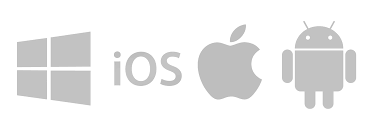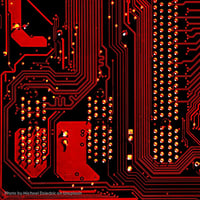We all love a shiny, top-of-the-line product, don’t we? Whether it’s the latest smartphone, the...
Adopting updated applications: Can it be too early?
Having been ‘forced’ to abandon my stable, comfortable and well used Windows 10 OS last week and with the imminent 30th anniversary of the PlayStation® console, today seems a good day to revisit an article I wrote back in November 2020 (with a few tweaks). Here is how it began:
November 2020:
With the arrival of next generation Xbox® and PlayStation® consoles this month, despite all the hype (and lust for the greatest gaming console ever - PS5® (see you in the comments)), is there a downside to jumping straight onto the newest platforms? Is there a ‘right’ time?
Let us be clear, vendors (such as PacSol® and those we partner with) would love every one of their licensed instals to be running the same release version, on the same operating system, with the same patches and on the same hardware – it would make their lives simple when it came to development, testing and implementation with many variables removed from the constantly moving target.

Apple® gets close with their iOS / OSX platform which is only available for use on their own product lines which they strictly control the design and development of. This co-dependent type of development minimises the potential variance that will be experienced once the release is sent out for public consumption. Not to say there will not be issues but it is as controlled as they can feasibly make it. It is also why game developers may prefer to work on a console title as the ‘restrictions’ are known but it can also potentially be a limiting factor in creativity.
BUT as discovered in the last few weeks by eager gamers who took delivery of their brand new Xbox® and PlayStation® consoles, ‘closed’ development doesn’t guarantee success – new consoles have been freezing, resetting and potentially ‘bricking’ (when the console becomes essentially unusable – a brick)…
What then begins is a cycle of correction. Users report issues, vendor programmers examine, collect the system data (supplied automatically these days across the internet), create a fix and release a patch. This cycle will continue throughout a product lifecycle but as a rule the first few months require the greatest changes to fix the most fundamental issues. Essentially the early adopters will now pave the way over the next few months for the creation of a more stable platform. Those who purchase a console early next year will be the beneficiaries of this initial support and development cycle and should have a much smoother initial experience with their consoles.
However, most vendors are not dealing with a closed or limited environment, rather a sea of operating system versions, service packs, virtual machine hosts, hardware vendors, graphics drivers, memory levels… the list is long, really long.
As a vendor you have to make choices, try to make the list smaller and not cater for every potential. In my youth with my first PC, I remember reading the side of the game box telling me I needed an Intel DX2 66 minimum processing speed with 4MB of memory and a 4Mb dedicated graphics card with MS DOS 6.2*. Vendors still make those stipulations today and not just for games. In recent memory dropping any support for Microsoft Internet Explorer (still used by many businesses), Microsoft Windows 7 (still used by many businesses), Windows 2008 Server R2 (still used…) – you get the idea. All of this creates a mix of conflicting priorities between vendor and customer within which there needs to be a balance. A new version of vendor software may have some fantastic new features, but unless there is a compelling argument for one of those new features to directly benefit the business, why upgrade? For a customer, the ‘old’ version installed is running on the servers / workstations without issue and it is doing what they need it to do. Unless a vendor is physically going to pull the plug on something being able to function or confirms an underlying operating system patch will stop that version / function from working, most businesses will not prioritise and upgrade.
All of this creates a mix of conflicting priorities between vendor and customer within which there needs to be a balance. A new version of vendor software may have some fantastic new features, but unless there is a compelling argument for one of those new features to directly benefit the business, why upgrade? For a customer, the ‘old’ version installed is running on the servers / workstations without issue and it is doing what they need it to do. Unless a vendor is physically going to pull the plug on something being able to function or confirms an underlying operating system patch will stop that version / function from working, most businesses will not prioritise and upgrade.
There are risks to clinging on to that older, embedded version, especially if it is running on older infrastructure. Should the hardware fail and a restore be required, vendors will often withhold any meaningful support to get running again or they potentially simply cannot provide the older installers (no really, I know one vendor that doesn’t keep past the last two versions). Conversely the vendor might have the software but your IT team can no longer supply an older operating system that the software is supported on leaving you with a tricky task of having to upgrade and restore simultaneously.
Conversely as a reseller, we would probably never advise that a new major release version is adopted straight away, unless there is a desperate need for a function in that release, it sometimes pays to wait for that first service patch to arrive, letting some other users take the initial pain.
As for the next generation console release, it took this author 24 hours to transfer from a PS4® (PlayStation® 4) to a PS5® facilitated by a 1TB external drive. It should have taken less than an hour but a bug in the initial release software means the automated transfer feature (allowing a direct transfer between consoles) doesn’t work… I am sure there will be a patch soon for the later adopters!
September 2024:
Back to my more recent Microsoft Windows ‘upgrade’. The initial release from Microsoft® for Windows 11 was back in October 2021 with the latest major revision in October 2023. Those of you with Windows 10 experience may recall that the initial Windows 11 rollout was restricted to the latest hardware (the vendor restricting the initial compatibility list for their benefit) and as time has gone on, the list of supported devices has increased as each bug / support / fix cycle has completed.
Does that mean my upgrade experience was smooth and painless - no. There were still some issues (specifically around the USB-C network dongle) which I eventually found a fix for, however, I guarantee my experience last week was far better than if I had performed the upgrade in the week Microsoft® made it initially available to me on my current device (back in 2022 from memory).
Personally it comes down to expectations and tolerance. If you jump in at the start, you should be prepared for the possibility of a few bumps, however, you may start to benefit / enjoy sooner. If you are not willing to trade having the latest and greatest for a little ‘pain’ with your head start then perhaps hold off and wait for the inevitable patch.

Toby Gilbertson, Director. September 2024
(based on an original article from November 2020)
“Xbox” is a trademark of Microsoft® Corporation.
“PlayStation” “PS5” and “PS4” are registered trademarks or trademarks of Sony Interactive Entertainment Inc.
“Apple” is a registered trademark of Apple Inc.
Microsoft Corporation, Sony Interactive Entertainment Inc, and Apple Inc do not endorse and are not officially affiliated with PacSol®
#PacSolUK #ChangeManagement #Upgrade #CustomerExperience



